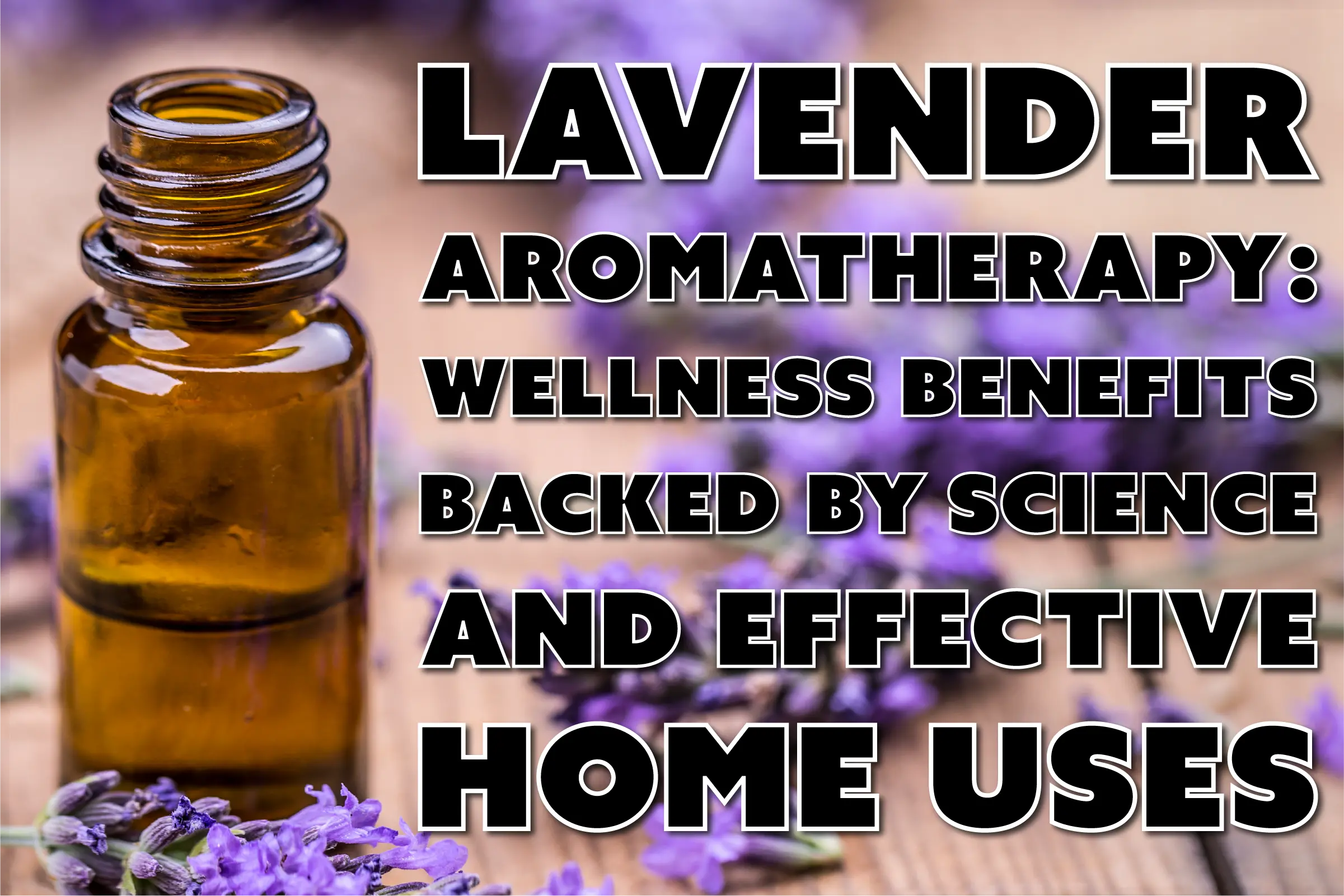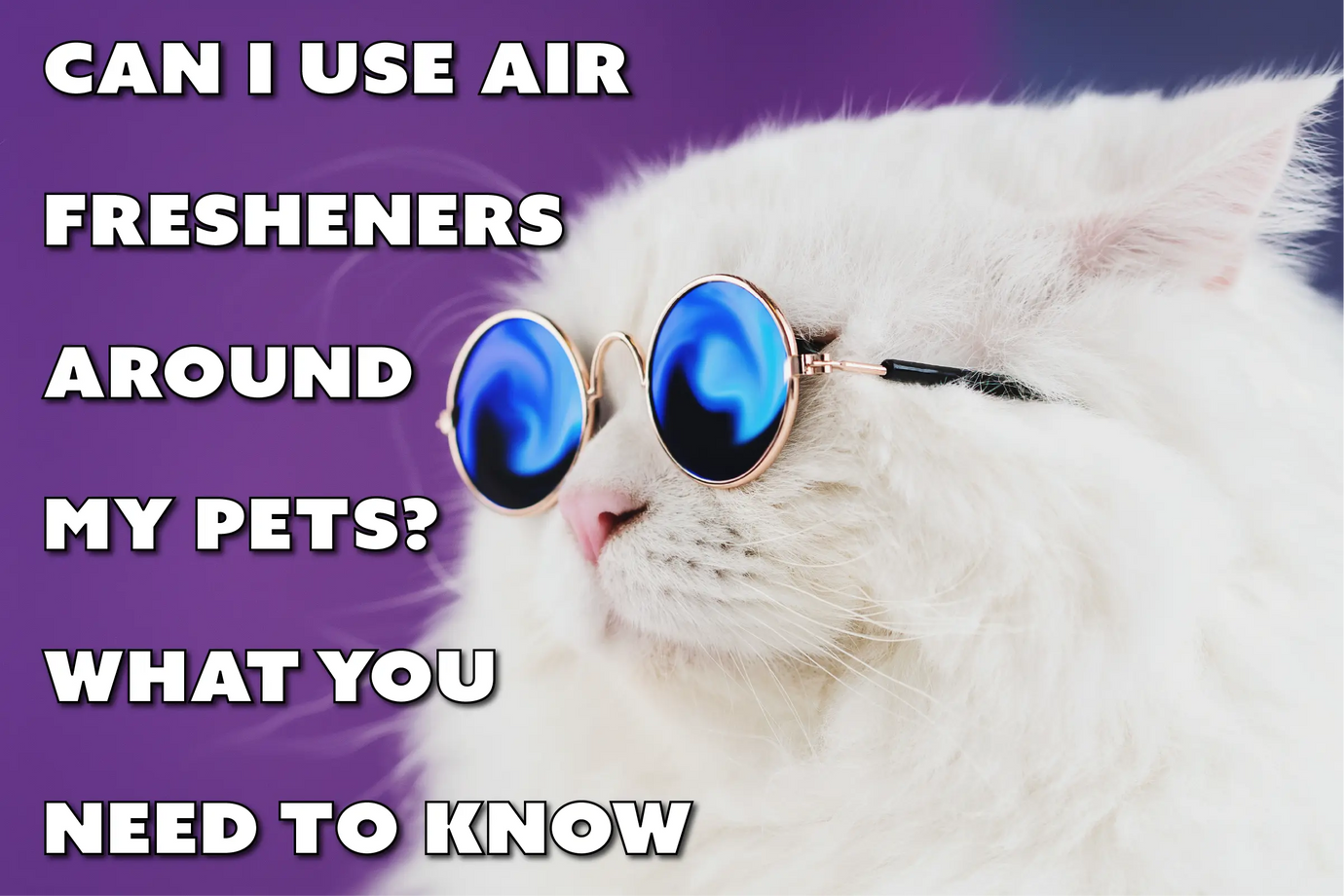Lavender Aromatherapy: Wellness Benefits Backed by Science & Effective Home Uses
The Science Behind Lavender Aromatherapy: Wellness & Medicinal Benefits
Once prized by ancient cultures for its calming scent and healing properties, lavender (Lavandula angustifolia) has now been put under the microscope, and modern research is confirming what folks have known for centuries: lavender aromatherapy has real mental and physical health benefits.
Whether it’s wafting from a candle, essential oil diffuser, or pillow spray, lavender’s relaxing scent is more than just pleasant—it can positively affect your nervous system, emotions, and even your body’s pain response. Let’s dive into the science behind this fragrant flower’s therapeutic power.
1. Lavender for Stress Relief and Anxiety
One of the most well-known and researched effects of lavender is its ability to reduce anxiety and stress. For example, a 2014 study published in the International Journal of Neuropsychopharmacology found that orally ingested lavender oil capsules (Silexan) were as effective as paroxetine in reducing generalized anxiety disorder (GAD) symptoms, without the sedative side effects (Kasper et al., 2014).
More relevant to aromatherapy, a 2017 meta-analysis in the Journal of Alternative and Complementary Medicine found that inhalation of lavender essential oil significantly reduced preoperative anxiety levels in people undergoing head and neck surgery (Wotman, M., et al., 2017).
💡 Takeaway: Lavender aromatherapy can provide real mental health benefits. Diffusing lavender oil or adding a few drops to a warm bath can help ease daily stress and soothe frazzled nerves.
2. Lavender Promotes Better Sleep
Insomnia keeping you up at night? Lavender might help.
A 2015 study in the Journal of Complementary and Alternative Medicine examined the effects of lavender inhalation on college students with sleep issues. The results? Students exposed to lavender aromatherapy reported improved sleep quality and greater daytime energy (Lillehei & Halcón, 2015).
Similarly, a 2017 clinical trial found that lavender aromatherapy significantly improved sleep quality and reduced fatigue among ICU patients (Cho et al., 2017). That’s right! Even in high-stress medical environments, lavender made a noticeable difference.
🛏️ Sleep Tip: Try a lavender-infused pillow mist, or add a few drops of lavender essential oil to a diffuser before bedtime.
3. Lavender for Pain Relief
You read that right! Lavender doesn’t just relax the mind; it can help relieve physical pain and rejuvenate the body.
Research suggests that lavender aromatherapy can reduce several different types of pain, including post-operative, dental, and menstrual pain. One 2016 study in the Annals of Medical and Health Sciences Research showed that women who used lavender essential oil aromatherapy during menstruation reported lower pain intensity than those who didn’t (Nikjou et al., 2016).
Another study in International Journal of Pediatric Otorhinolaryngology found that lavender oil inhalation significantly reduced the daily use of acetaminophen for pain relief during the 3 days following tonsil surgery (Soltani et al., 2013).
🌿 Bonus Tip: Inhale lavender oil directly or combine it with massage for even more pain-relieving effects.
4. Lavender’s Role in Heart Health and Blood Pressure
This one’s lesser-known, but no less important.
A 2022 study published in Holistic Nursing Practice found that inhaling “lavender oil reduced blood pressure, heart rate, serum cortisol, and subjective anxiety.” (Çiçek et al., 2022).
Researchers believe this effect is due to lavender’s ability to stimulate the parasympathetic nervous system—the part of your body that promotes relaxation and recovery.
❤️ Heart Tip: A few deep breaths of lavender aromatherapy can help your body shift into "rest and digest" mode, ideal for relaxation and recovery.
Is It Safe?
Lavender aromatherapy is generally safe for most people, though a few precautions are worth noting:
- Always dilute essential oils before topical application.
- Pregnant or breastfeeding individuals should consult a healthcare provider.
- Avoid direct inhalation for long periods if you have asthma or respiratory issues.
Summary of Key Lavender Aromatherapy Benefits
Here’s a quick breakdown of what the science says:

Final Thoughts: Science Catches Up to Tradition
What ancient healers knew, science now confirms: lavender truly supports mental and physical well-being. Whether you’re using it to calm nerves before a presentation, drift off to sleep, or manage discomfort, lavender’s benefits are well-supported and easy to access.
So next time you catch a whiff of that relaxing scent, know this: you’re not just enjoying a lovely fragrance; you’re tapping into a proven natural remedy with centuries of tradition and mountains of modern research behind it.
How to Use Lavender Aromatherapy at Home
So now that we’ve covered the science, the next big question is: How do you actually use lavender in everyday life?
The good news is there are multiple easy methods for adding lavender aromatherapy to your daily routine, each with its own vibe and benefits. Whether you're into spa-like vibes, quick spritzes, or subtle background scents, there's a lavender delivery system for you.
Here are the most effective ways to use lavender aromatherapy at home:
1. Reed Diffusers
These are a classy, low-maintenance option that slowly release fragrance into the air — no electricity, no flames, no fuss.
How It Works:
A glass bottle holds a blend of essential oil and carrier fluid (like mineral oil or alcohol), and porous reeds absorb and diffuse the scent into the room over several weeks.
Why It’s Great:
- Constant, subtle scent—ideal for bedrooms, bathrooms, or offices. There are even reed diffuser models specifically designed for cars!
- No plugs or flames, so they’re safe around pets and kids.
- Aesthetic appeal: Reed diffusers come in a wide variety of gorgeous designs to accent your home’s décor.
Pro Tip:
Flip the reeds every few days for a stronger scent or use more reeds for a more intense fragrance.
2. Ultrasonic Aroma Diffusers (Electronic)
Now we’re getting fancy! These little machines are the go-to for essential oil lovers.
How It Works:
There are two types of ultrasonic diffusers: Water-based and Waterless. With water-based diffusers, pour water into the device’s reservoir and add a few drops of your favorite lavender essential oil to the mix. The diffuser then uses ultrasonic vibrations to atomize the mixture into a fine mist that spreads throughout the room. Waterless systems, like the ones we sell on MasterCreationsInc.com, function similarly; except they add scent to your space using pure, undiluted essential oils.
Why It’s Great:
- Delivers a pure, consistent aroma to your space.
- Set the intensity to your liking.
- Can run with timers or automatic shut-off.
- Water-based systems humidify your space while diffusing.
- Great for bedtime routines, especially with lavender’s sleep-promoting effects.
Bonus Features:
Many models include LED lights, soothing sounds, or Bluetooth speakers—perfect for creating a calming nighttime ritual.
3. Essential Oil Room Sprays
Short on time? This one’s for you.
How It Works:
These pre-mixed sprays usually combine essential oil(s), water, and a light emulsifier. Just shake and spritz into the air, on linens, or even into your car. It doesn't get much easier than that!
Why It’s Great:
- Instant freshness with no setup.
- Portable: Great for travel, office, or stressful situations.
- You control the intensity by how much you spray.
DIY Tip:
You can make your own at home! Combine:
- ½ cup distilled water
- 1 tablespoon witch hazel or vodka (to help oil disperse)
- 15–20 drops of lavender essential oil
Shake it up in a spray bottle and you’re good to go.
4. Pillow Sprays and Linen Mists
For the dreamers and light sleepers out there, this is a must.
How It Works:
These sprays are specifically designed for use on fabrics such as pillows, bedsheets, and curtains. Lightly misting these spots with lavender before bedtime can help ease you to sleep.
Why It’s Great:
- Helps signal bedtime to your brain.
- Combines scent with the comfort of your bedding, a double win.
- Works even for those who are scent-sensitive during the day.
💤 Try this as part of your wind-down routine: Lavender pillow spray + no screens + soft lighting = bliss.
5. Lavender Candles
Good old-fashioned candles still do the trick, and they bring a cozy aesthetic too.
How It Works:
Scented candles are typically infused with lavender essential oils or synthetic fragrance blends. When burned, they slowly release scent into the room.
Why It’s Great:
- Adds ambiance and warmth to any room.
- Great for meditative practices or evening relaxation.
- Many soy candles also include blends with chamomile or vanilla for enhanced calm.
🔥 Safety First: Never leave a candle unattended, and keep wicks trimmed for clean burning.
6. Lavender Incense
Incense is one of the more traditional ways to enjoy the scent of lavender and its holistic benefits.
How It Works:
Incense sticks are typically made of joss powder, which serves as a combustible material and binding agent. The joss powder is bound around a stick, usually bamboo, which is then dipped in essential oils or fragrance oils to imbue it with scent. You then light these essential oil-coated sticks on fire, extinguish them once they begin to form an ember, and let them slowly burn away over time, releasing a lovely aroma and beautiful smoke stream throughout your space.
Why It’s Great:
- Adds a relaxing and mysterious aesthetic to any space.
- Much like candles, lavender incense is perfect for meditative practices or evening relaxation.
🔥 Safety First: Just like with candles, never leave lit incense unattended. Embers can sometimes fall or be blown outside of your incense holder, risking a mess and worse.
7. Inhalation and Personal Use
Sometimes, the simplest methods are the most powerful.
How It Works:
- Add 1–2 drops of lavender essential oil to a tissue and inhale deeply.
- Rub a diluted drop behind your ears or on your wrists.
- Use an essential oil inhaler (a small tube that fits in your pocket).
Why It’s Great:
- Direct delivery to your olfactory system (aka your brain’s emotional center).
- Fast-acting—great for on-the-go stress or anxiety relief.
- Low-cost and travel-friendly.
🛑 Note: Never apply undiluted essential oils directly to the skin—always mix with a carrier oil like jojoba or sweet almond oil.
8. Aromatherapy Baths and Showers
Turn your bathroom into a lavender-scented spa.
How It Works:
- Add a few drops of essential oil to a warm bath.
- Use lavender-scented bath salts or bath bombs.
- Sprinkle oil on the floor of a hot shower for steam diffusion.
Why It’s Great:
- Combines heat, scent, and water for a triple threat to tension.
- Perfect for nighttime routines or post-workout recovery.
- Affordable luxury at home.
🛁 Bonus Idea: Add Epsom salt and dried lavender buds for muscle relief and visual appeal.
Choosing the Right Lavender Essential Oil
Not all lavender oils are created equal. For the best therapeutic effects, look for:
- Botanical name: Lavandula angustifolia
- Country of origin: Bulgaria, France, or Tasmania are top-quality producers
- Organic or wildcrafted options for purity
Final Thoughts: Bring the Science of Lavender Into Your Space
Lavender’s calming and healing powers aren’t just a myth; they're backed by centuries of use and a growing repository of clinical research. And with a variety of simple, affordable ways to incorporate it into your home, there’s no reason not to give lavender aromatherapy a try.
Whether you’re unwinding with a reed diffuser, drifting off on a lavender-spritzed pillow, or zoning out with a candle-lit bath, lavender can support your mental, emotional, and physical wellness—and smell amazing while doing it.
Quick Recap: Lavender Aromatherapy at a Glance

Sources:
- Kasper, S., et al. (2014). Lavender oil preparation Silexan is effective in generalized anxiety disorder--a randomized, double-blind comparison to placebo and paroxetine. International Journal of Neuropsychopharmacology.
- Kasper, S., et al. (2010). Silexan, an orally administered Lavandula oil preparation, is effective in the treatment of 'subsyndromal' anxiety disorder: a randomized, double-blind, placebo controlled trial. International Journal of Neuropsychopharmacology.
- Wotman, M., et al. (2017). The Efficacy of Lavender Aromatherapy in Reducing Preoperative Anxiety in Ambulatory Surgery Patients Undergoing Procedures in General Otolaryngology. Laryngoscope investigative otolaryngology.
- Lillehei, A. S., Halcón, L. L., et al. (2015). Effect of Inhaled Lavender and Sleep Hygiene on Self-Reported Sleep Issues: A Randomized Controlled Trial. Journal of Alternative and Complementary Medicine.
- Cho E. H., et al. (2017). The Effects of Aromatherapy on Intensive Care Unit Patients' Stress and Sleep Quality: A Nonrandomised Controlled Trial. Evidence-Based Complementary and Alternative Medicine.
- Nikjou, R., et al. (2016). The Effect of Lavender Aromatherapy on the Pain Severity of Primary Dysmenorrhea: A Triple-blind Randomized Clinical Trial. Annals of Medical & Health Sciences Research.
- Soltani, R., et al. (2013). Evaluation of the effect of aromatherapy with lavender essential oil on post-tonsillectomy pain in pediatric patients: a randomized controlled trial. International Journal of Pediatric Otorhinolaryngology.
- Çiçek, C., et al. (2022). The Effect of Aromatherapy on Blood Pressure and Stress Responses by Inhalation and Foot Massage in Patients With Essential Hypertension. Holistic Nursing Practice.









